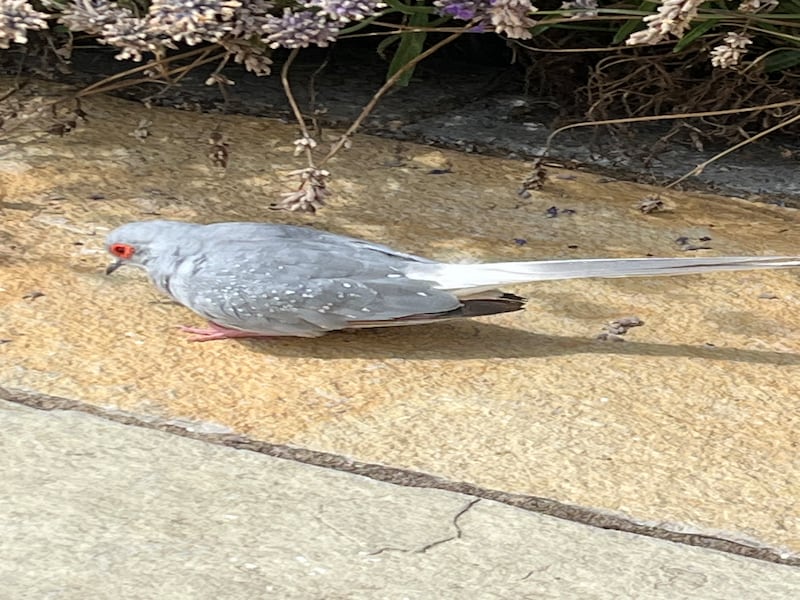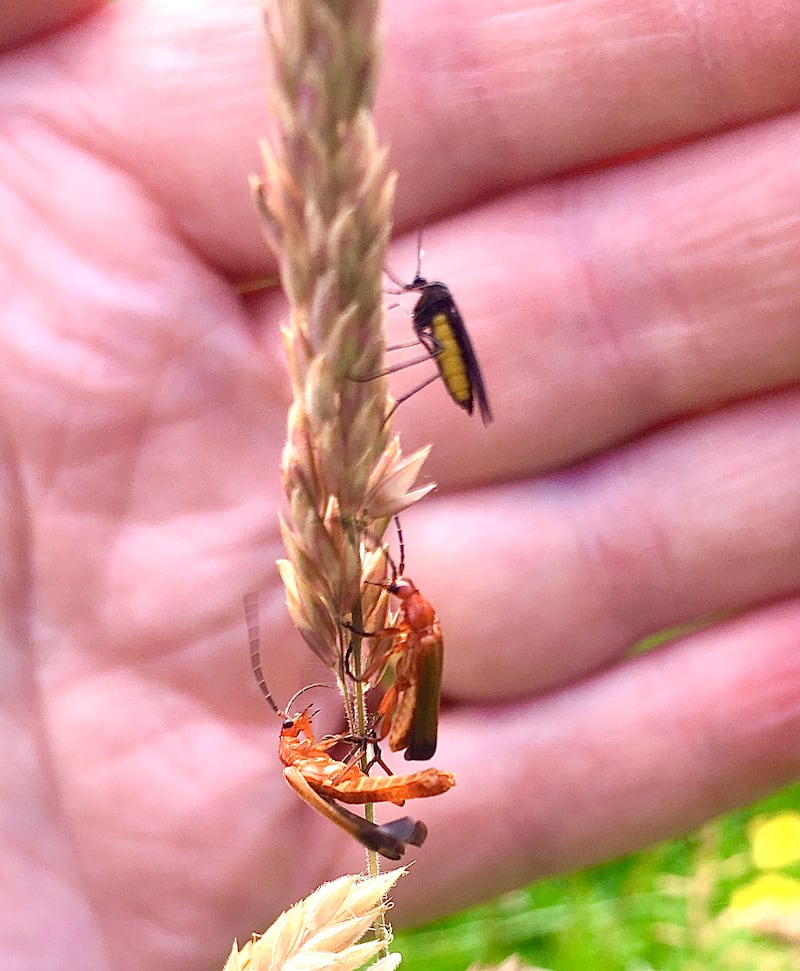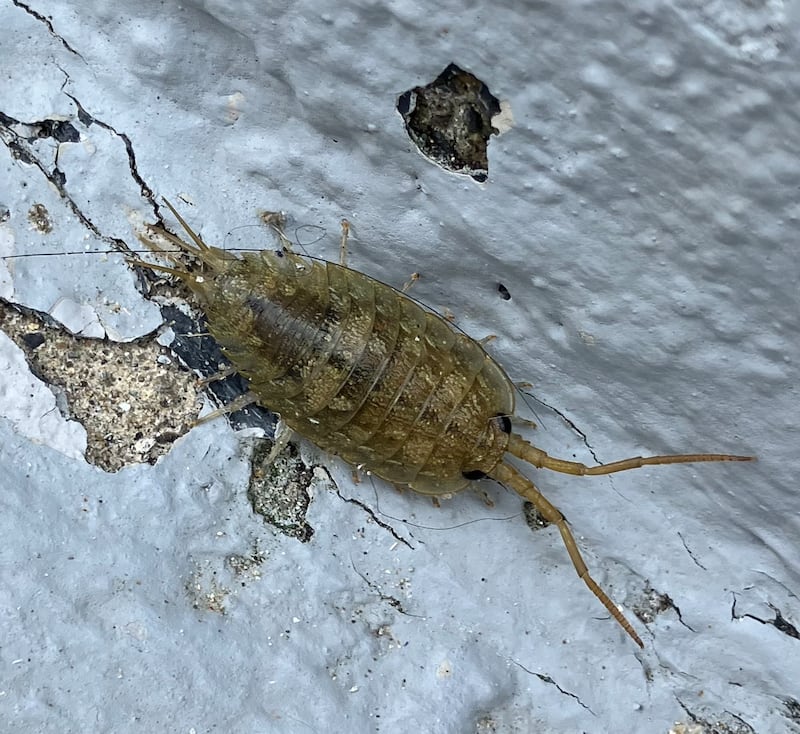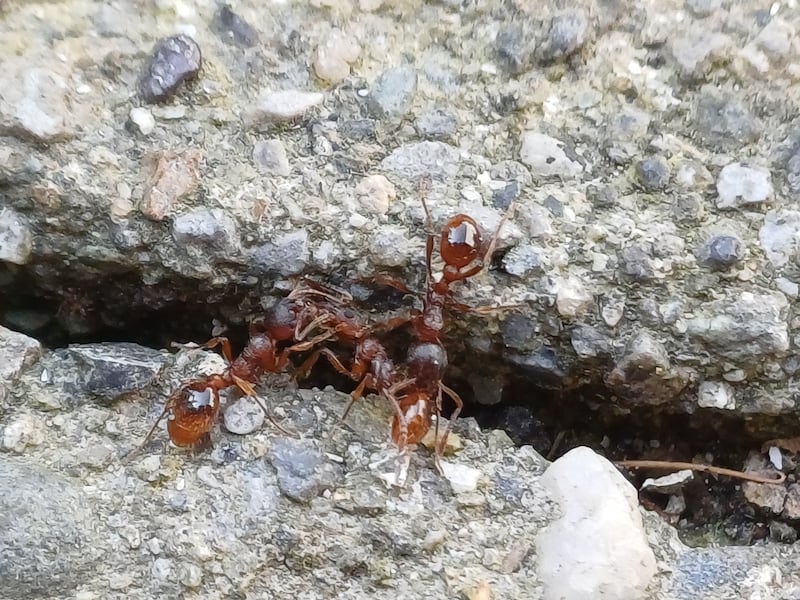This pine marten came right up to our back door one recent night. A Furlong, Co Kilkenny
Pine martens were once an exceedingly rare mammal in Ireland because of the scarcity of their woodland habitat, poisoning, persecution and being hunted for their fur. Following the introduction of legal protection in 1976 and the slow expansion of forestry, the population is recovering and becoming widespread. While they are omnivores and will feed on grey squirrels with a dessert of wild cherries, they have come to realise that human habitations can be a source of food and indeed of living space in roof voids. Never feed them or leave food out for them. Wild mammals should forage for themselves, and that includes urban foxes.

I recently found this chick pottering around the garden. It was very friendly and fearless, and moved like a pigeon. Lindsay Joyce, Co Wicklow
That’s because it is a pigeon – a diamond dove, a pigeon species native to Australia. It is most likely a male as the eye ring of the female is more brown than orange. This is a fully grown adult, not a chick. At 19-21cm when fully grown, it is half the size of our large native wood pigeon. It is kept worldwide as a pet, which explains its friendliness. This diamond dove has escaped from captivity – hopefully by itself, so that it won’t become established in the wild here.
RM Block

What are these little beasties? I found them on my uncut lawn while inspecting it for bees, which have been scarce so far this year. Paul Connolly, Co Cavan
This is the common red soldier beetle, Rhagoncha fulva, which occurs in grasslands, along hedgerows and in woodland, parks and gardens. The adults feed on aphids, as well as eating pollen and nectar. Larvae prey on ground-dwelling invertebrates, such as slugs and snails, and live at the base of long grasses. The adults spend much of their short, summer lives mating, and can often be seen in pairs. Your uncut lawn will have to sport more than flowering grass stalks to attract bees – they love purple or yellow flowers in particular.

Have you any idea what this speedy chap, seen at the springboards (swimming place) in Skerries a few weeks ago, could be? Susan Roundtree, Co Dublin
I have. It is the sea slater, Ligia oceanica, a type of crustacean closely related to the woodlouse. They are detritivores and munch on decaying material such as seaweed; this helps break it down and increase the surface area for decomposition by bacteria and fungi. The best time to look for sea slaters is late in the evening or at night when they leave their hidey-holes in search of food. Sea slaters have gills but don’t live underwater, but in damp environments such as crevices or under rocks. And, yes, they can move like the clappers when disturbed.

I’ve been watching a group of ants in my garden in south Dublin. Was there a microscopic war going on? There were loads of severed abdomens littered around the crack that I think they live in, alongside groups of (live) ants stacked on top of one another. Órla Slattery
These are red ants, one of two species of ants commonly found in our gardens and patios. (The others are the non-biting black ants.) What you were watching was the worker ants doing some housekeeping. As well as feeding the grubs and moving them around to keep warm, they also clean out the whole underground nest and remove the other worn-out workers who have died of exhaustion. These are brought to the surface with much co-operation and dismembered for easier disposal.
Please submit your nature query, observation, or photo, with a location, via irishtimes.com/eyeonnature






















